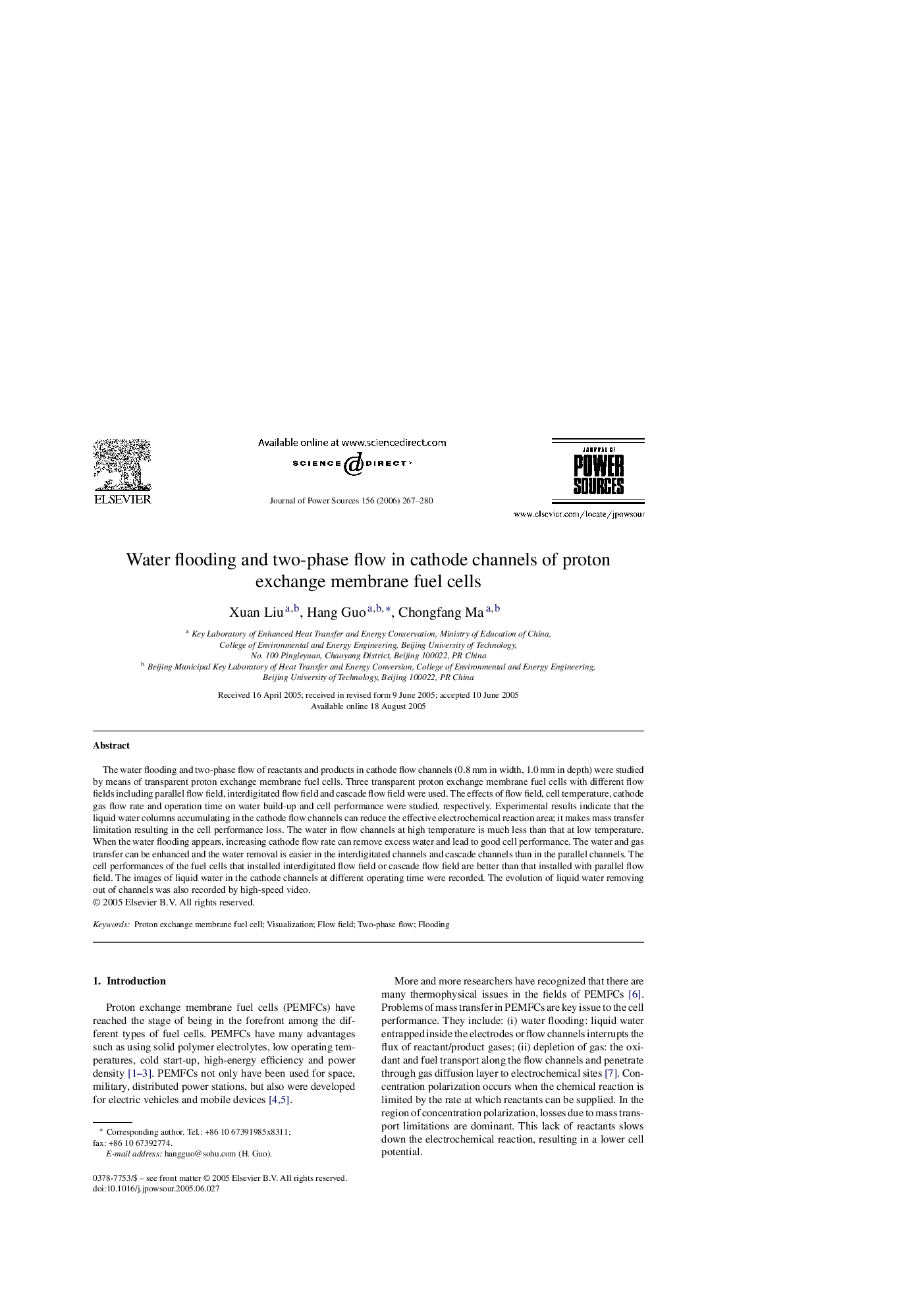| Article ID | Journal | Published Year | Pages | File Type |
|---|---|---|---|---|
| 1295027 | Journal of Power Sources | 2006 | 14 Pages |
The water flooding and two-phase flow of reactants and products in cathode flow channels (0.8 mm in width, 1.0 mm in depth) were studied by means of transparent proton exchange membrane fuel cells. Three transparent proton exchange membrane fuel cells with different flow fields including parallel flow field, interdigitated flow field and cascade flow field were used. The effects of flow field, cell temperature, cathode gas flow rate and operation time on water build-up and cell performance were studied, respectively. Experimental results indicate that the liquid water columns accumulating in the cathode flow channels can reduce the effective electrochemical reaction area; it makes mass transfer limitation resulting in the cell performance loss. The water in flow channels at high temperature is much less than that at low temperature. When the water flooding appears, increasing cathode flow rate can remove excess water and lead to good cell performance. The water and gas transfer can be enhanced and the water removal is easier in the interdigitated channels and cascade channels than in the parallel channels. The cell performances of the fuel cells that installed interdigitated flow field or cascade flow field are better than that installed with parallel flow field. The images of liquid water in the cathode channels at different operating time were recorded. The evolution of liquid water removing out of channels was also recorded by high-speed video.
